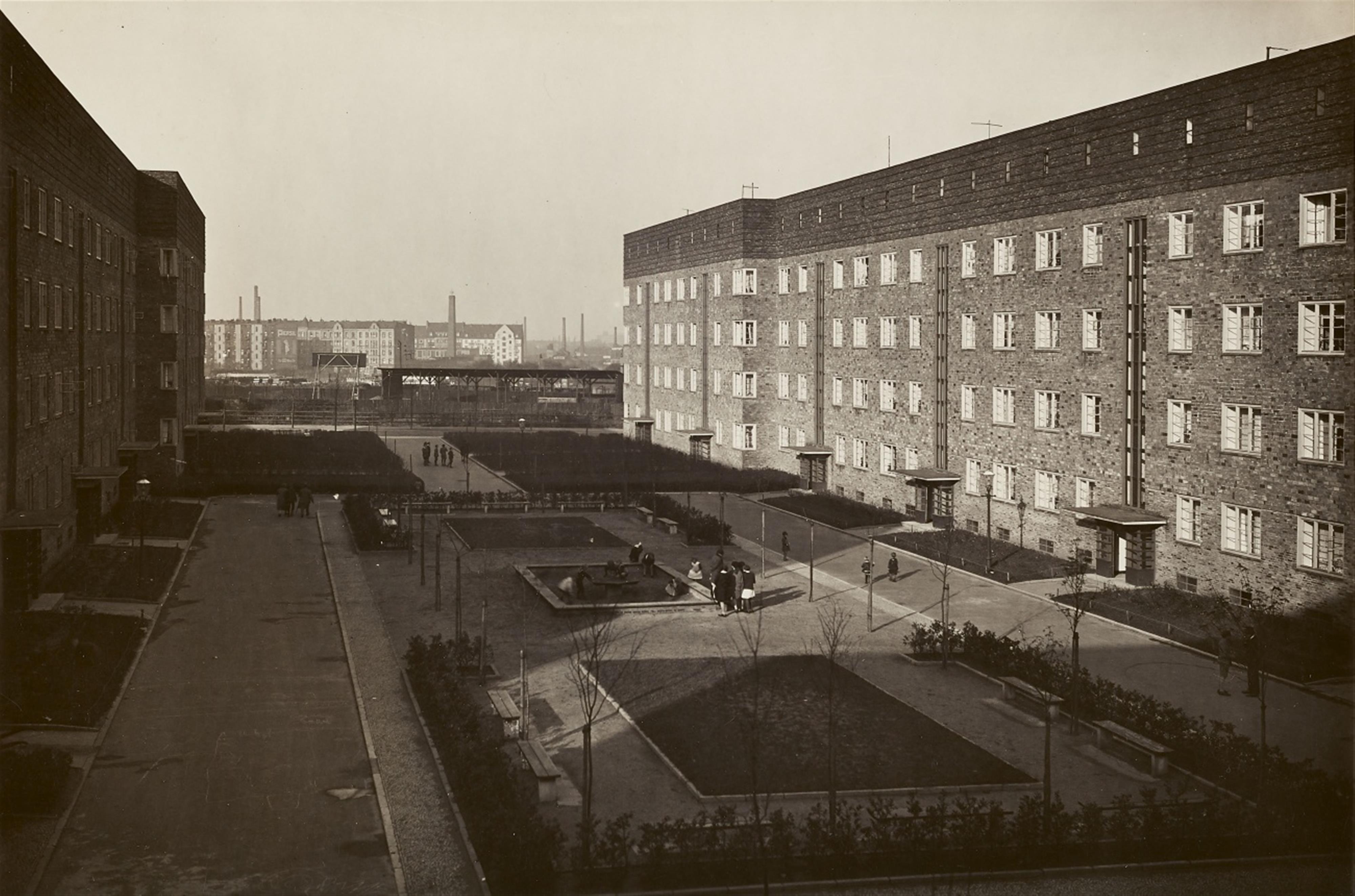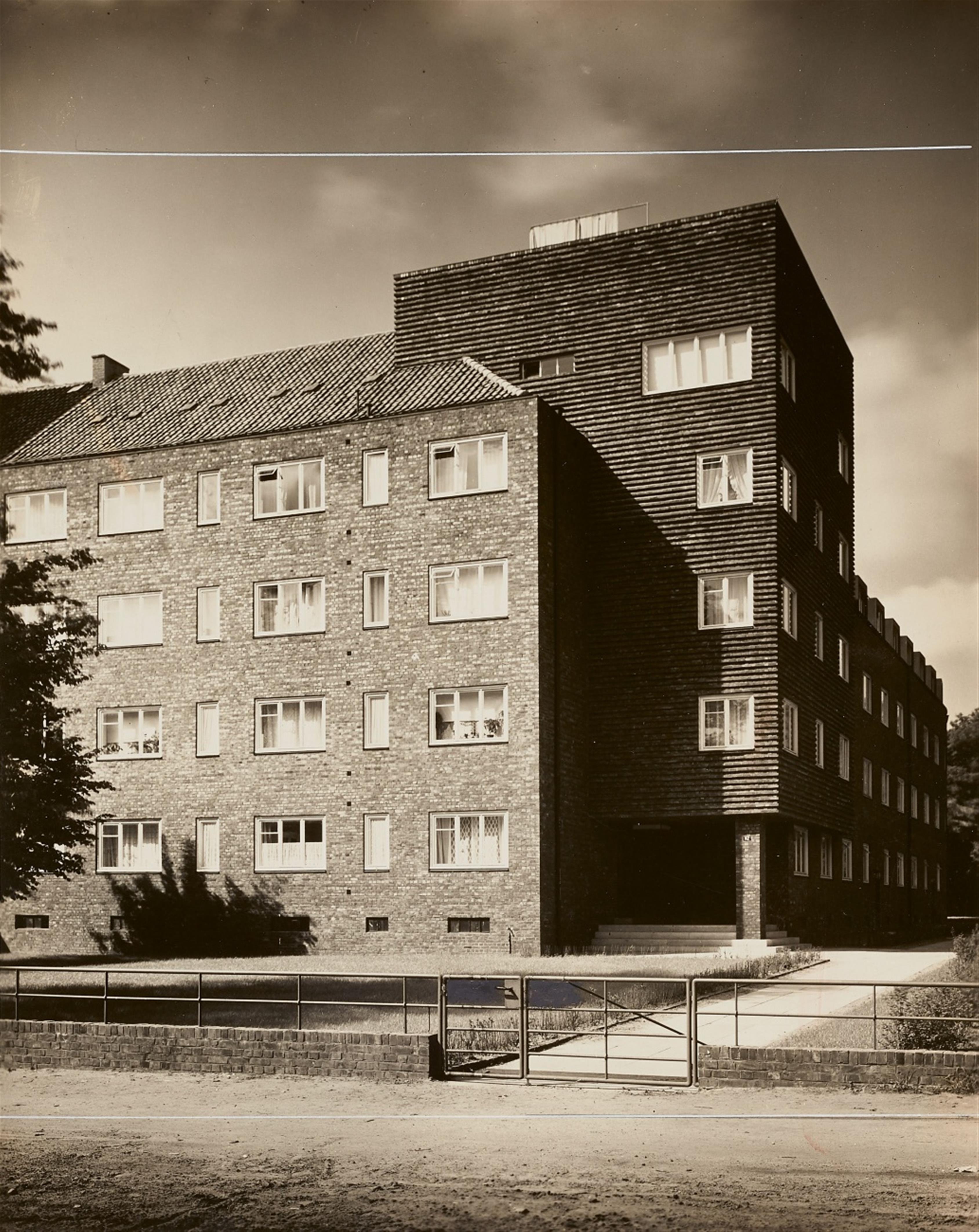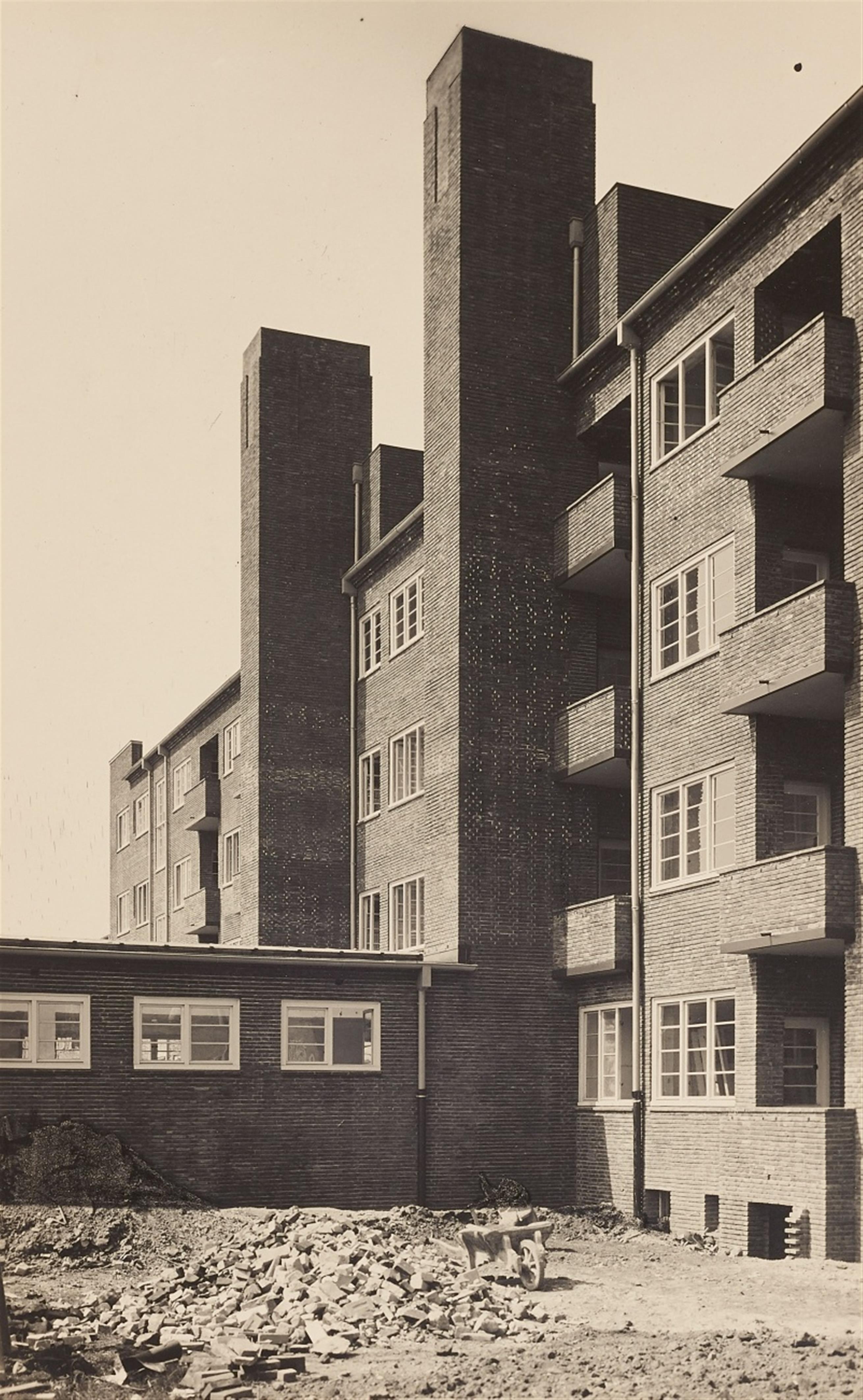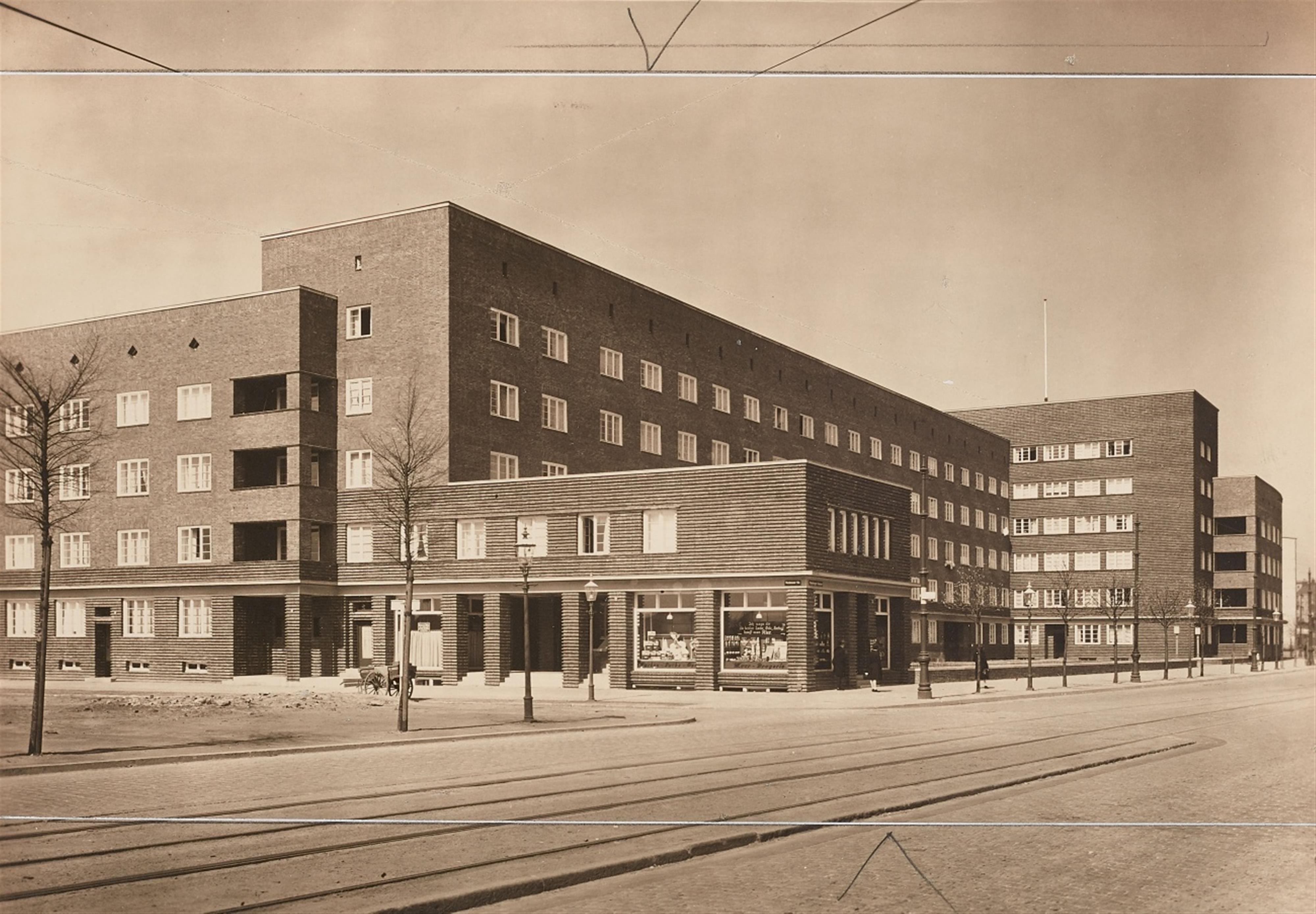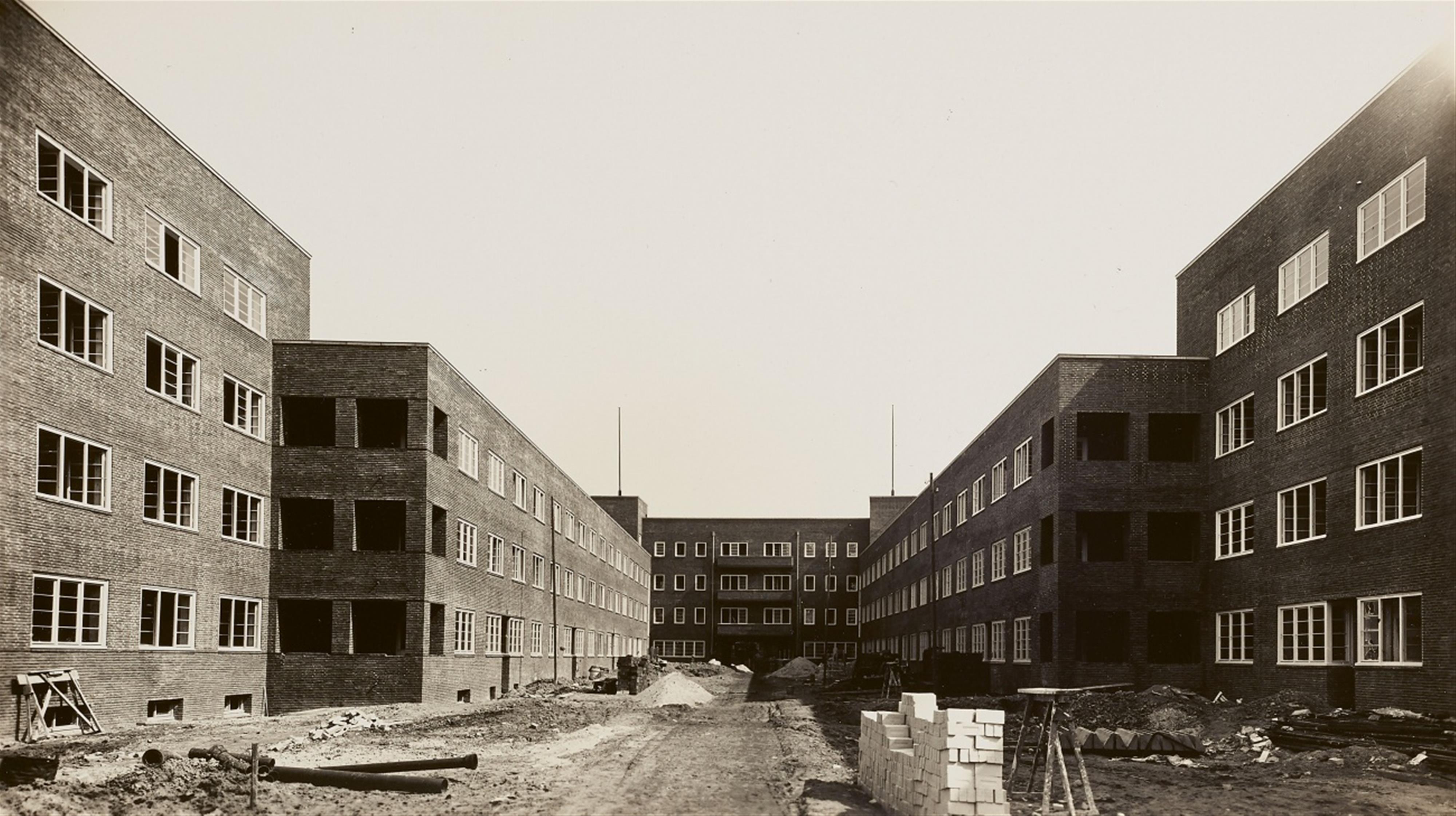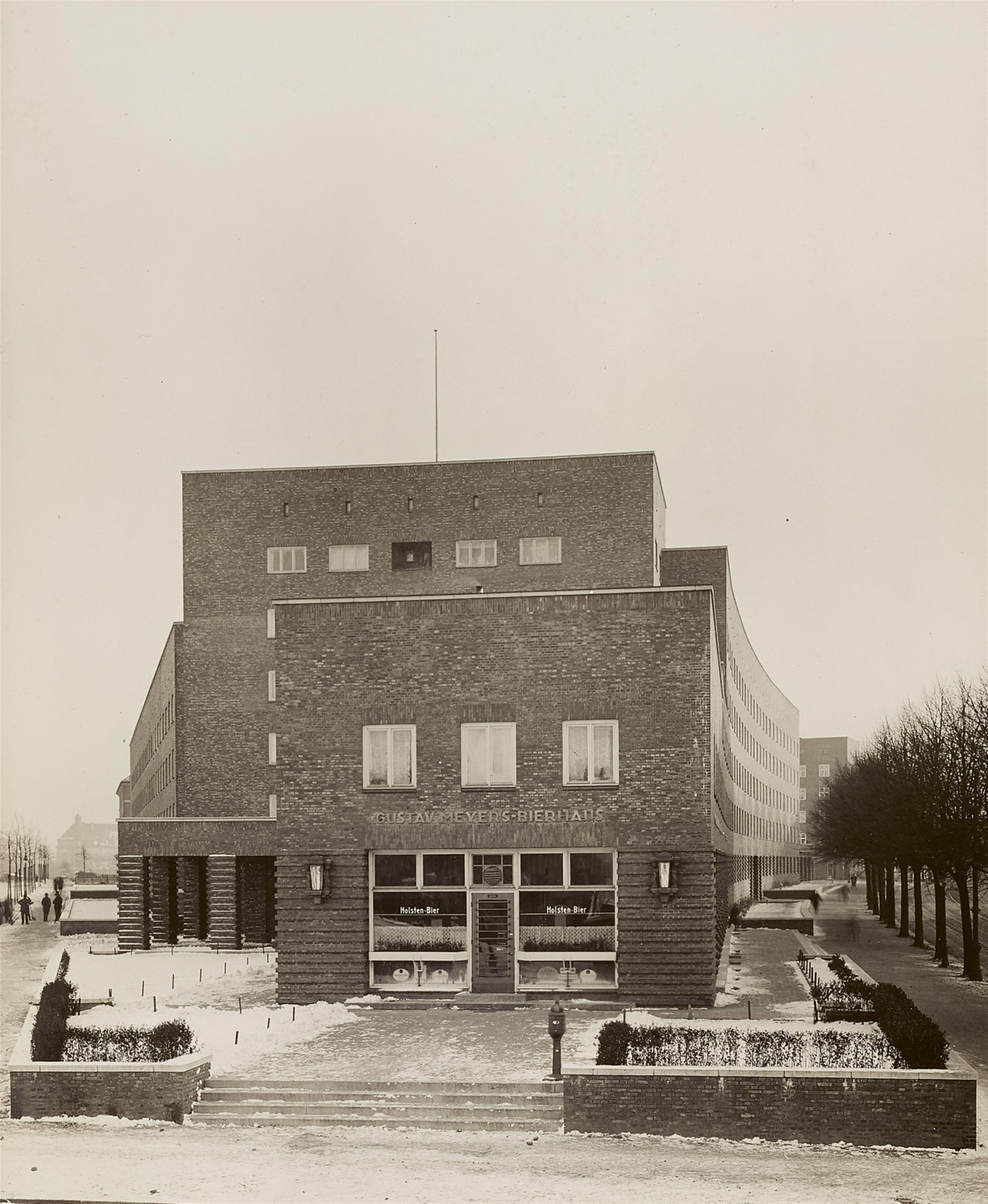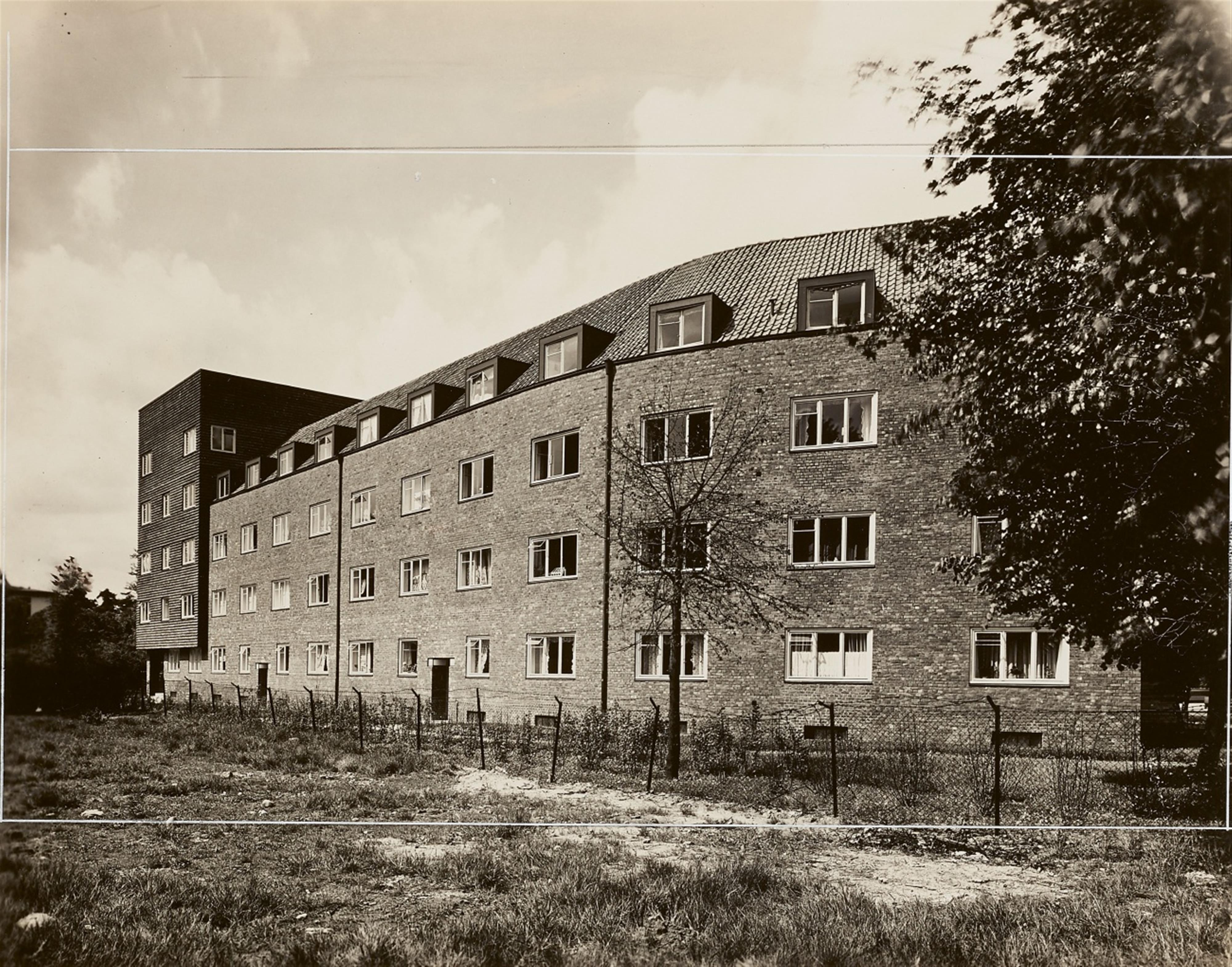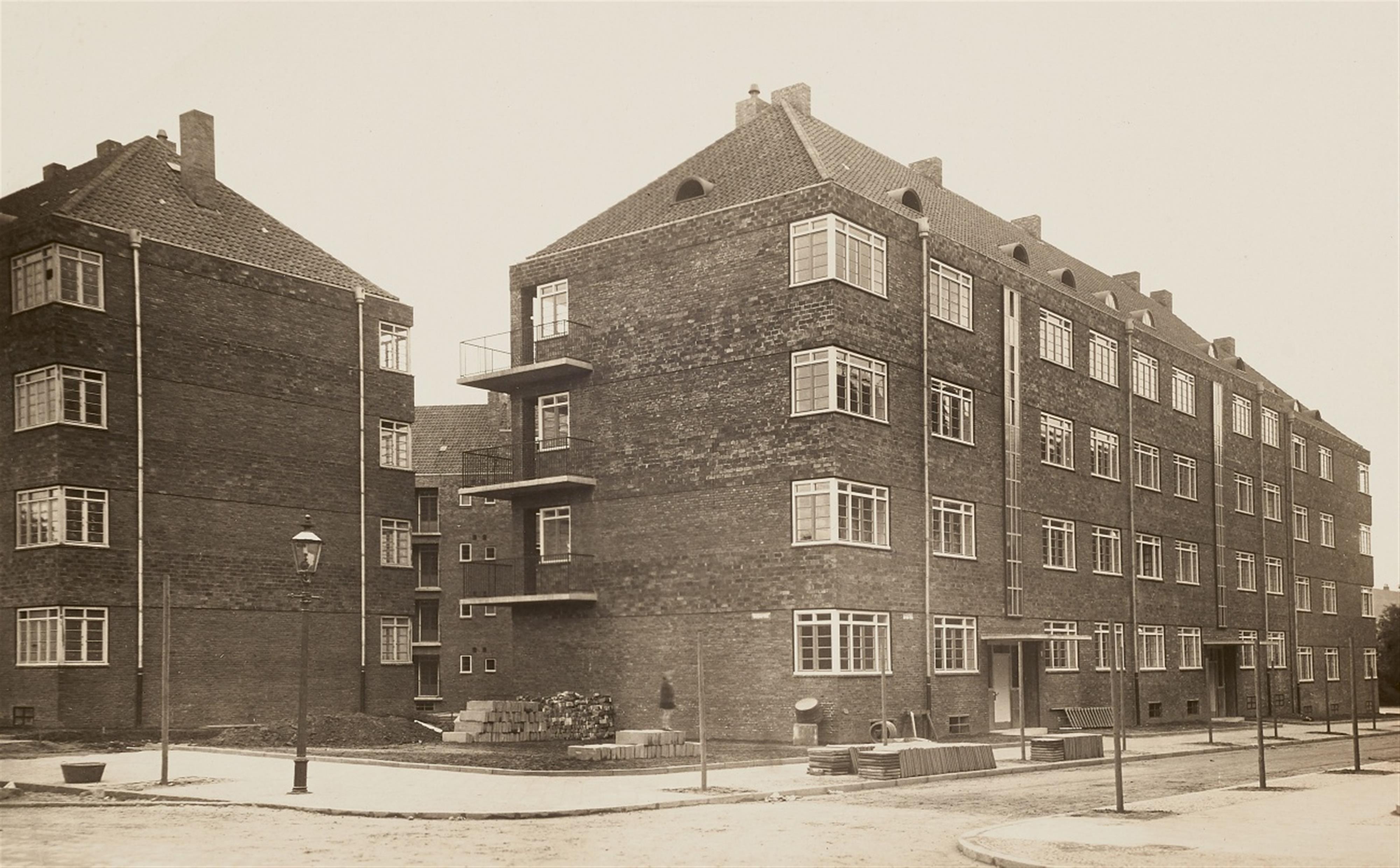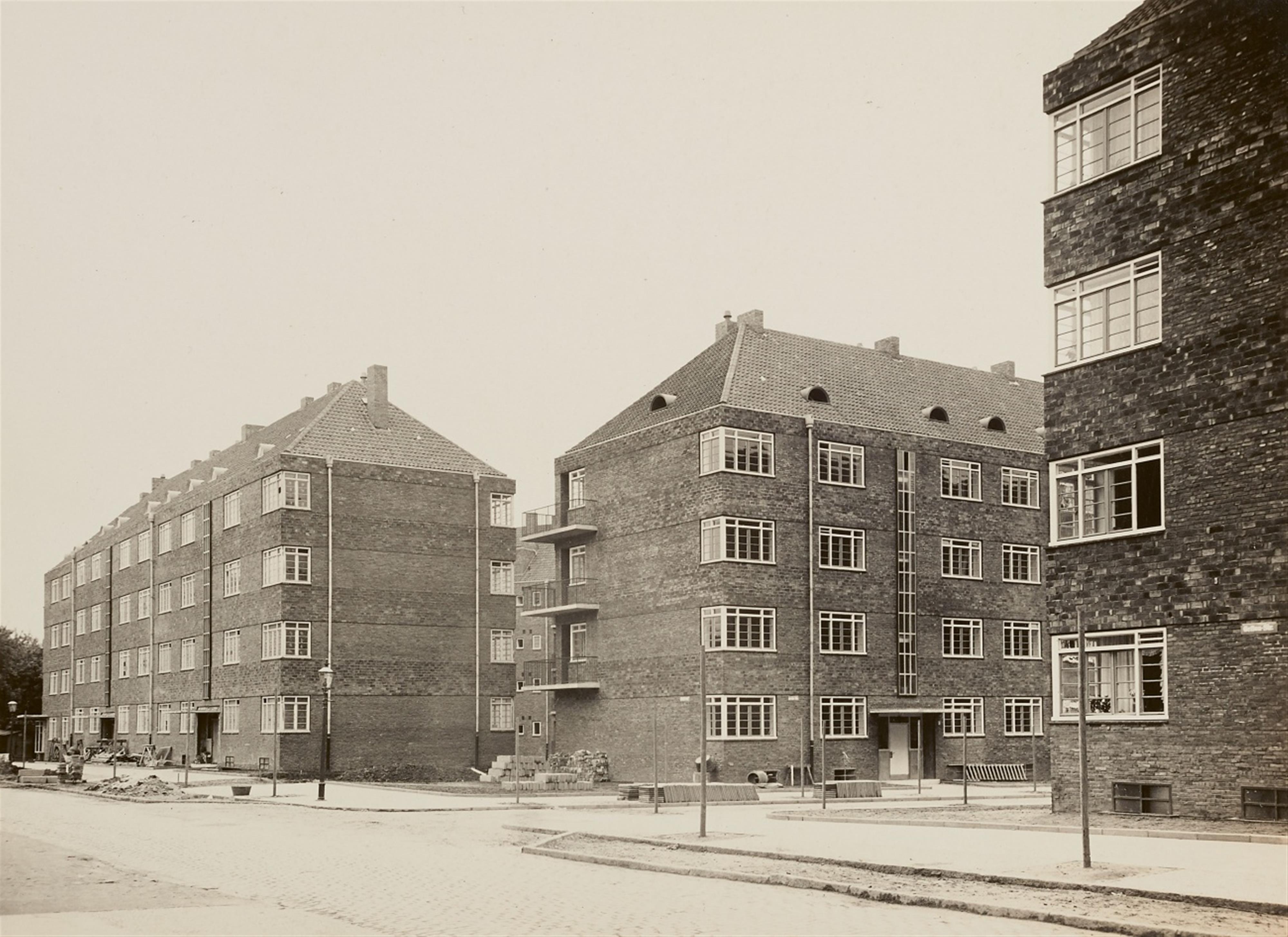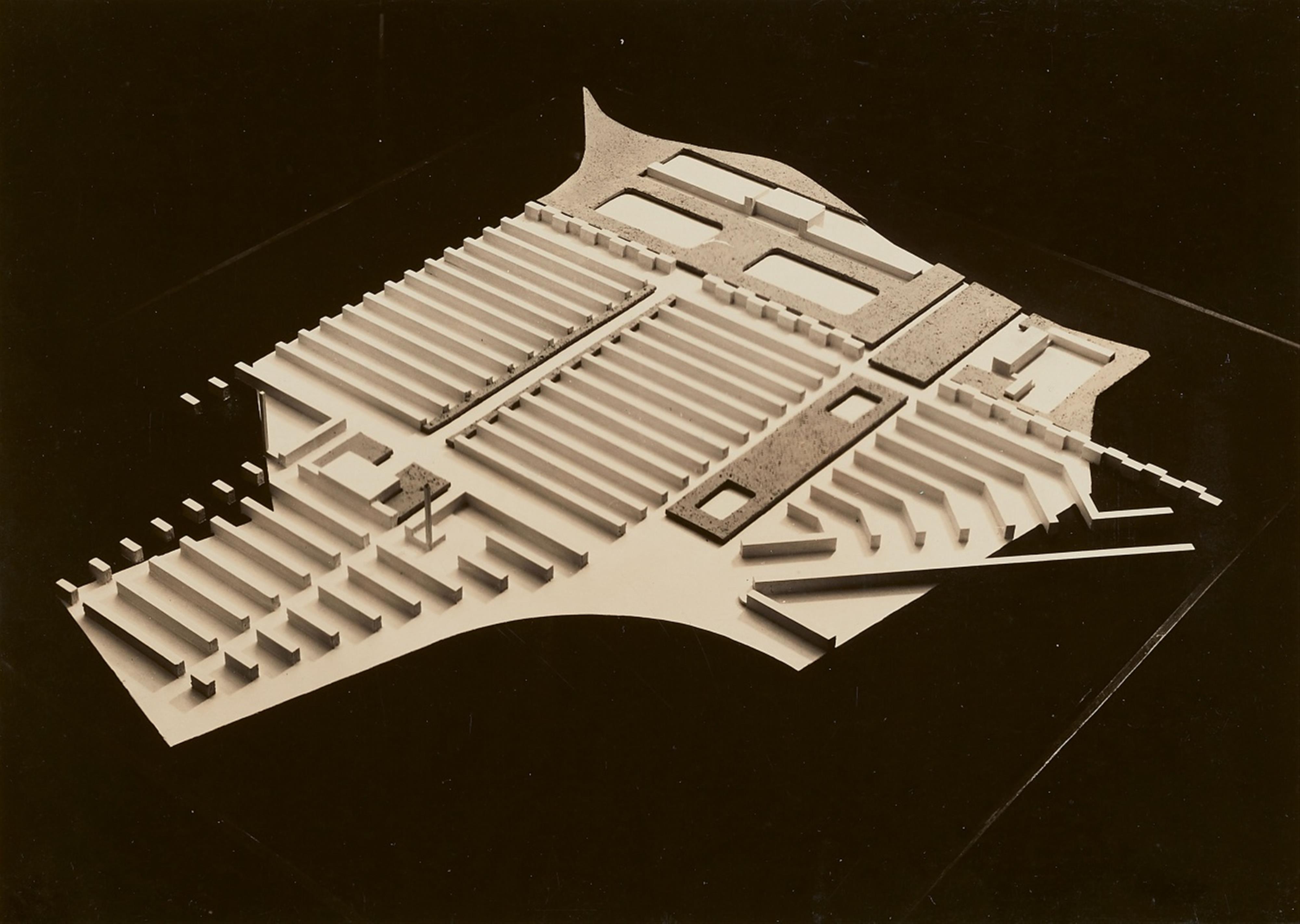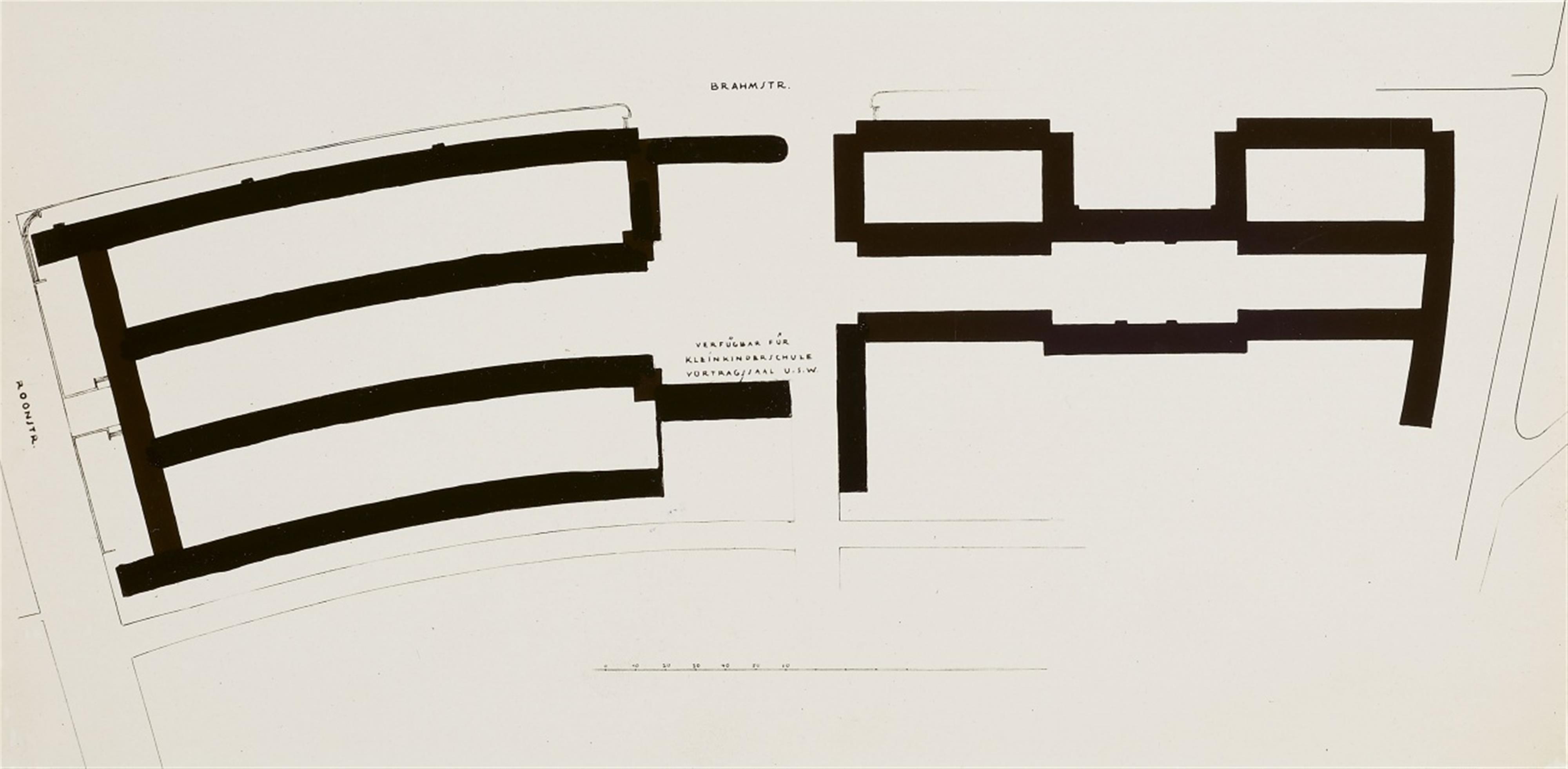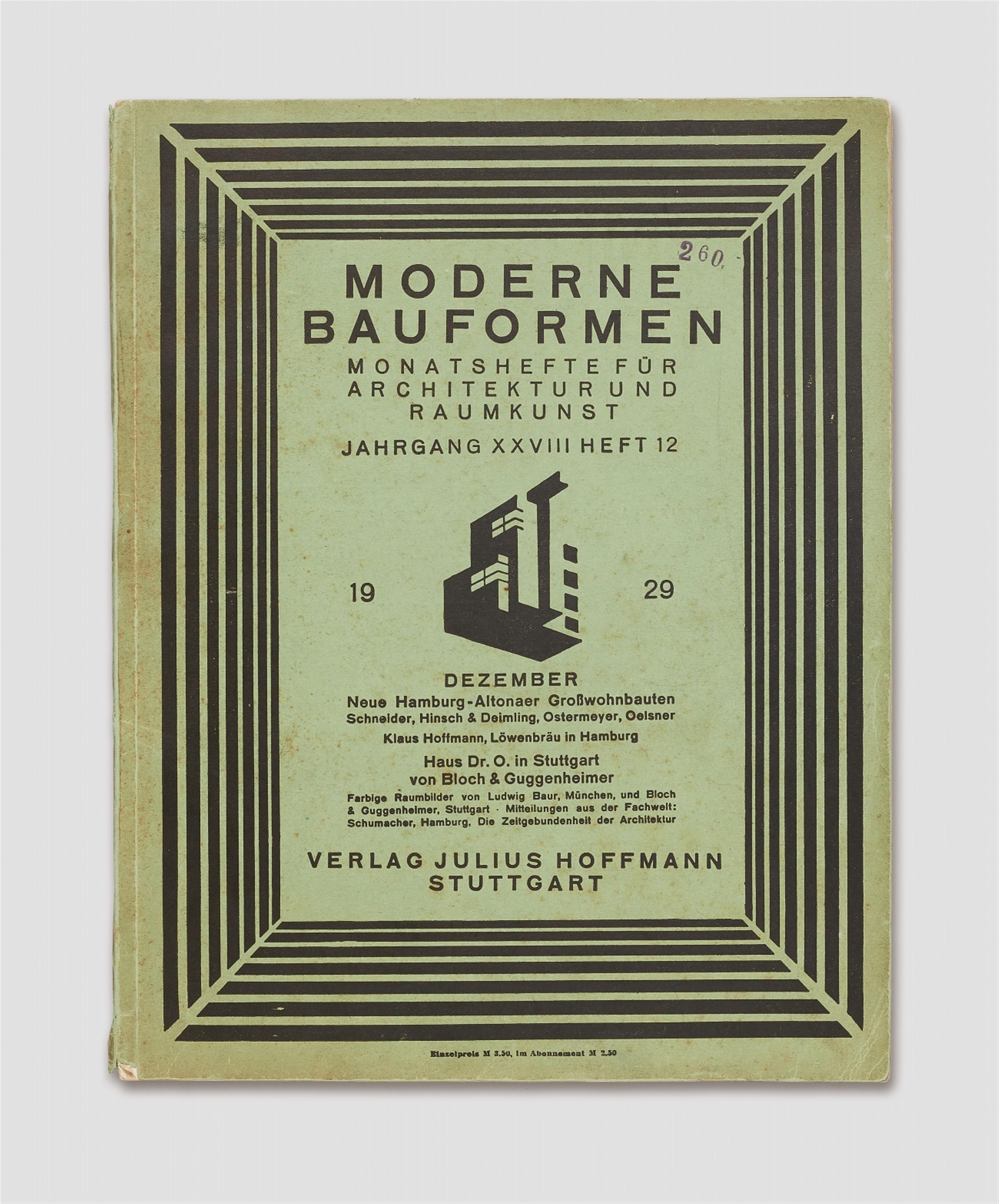Ernst Scheel
Neue Hamburg-Altonaer Großwohnbauten
1928/1929
16 vintage gelatin silver prints. From 12 x 16.9 cm (12.4 x 17.2 cm) to 17.3 x 22.4 cm (16.6 x 23.1 cm). 14 prints titled in pencil and with photographer's stamp, some also annotated in an unknown hand in pencil and crayon, on the verso.
Architects: Hinsch & Deimling, Friedrich Ostermeyer, Gustav Oelsner, E. Schröder
Supplement:
12 vintage gelatin silver prints by Ernst Scheel, partly collaged, with views of floor plans and front elevations of the projects.
4 Vintage gelatin silver prints of the Aerial Photography Department of the Luftverkehrsgesellschaft Hamburg m.b.H.
Moderne Bauformen. Monatshefte für Architektur und Raumkunst, Volume XXVIII, Issue 12, December 1929 (editor Julius Hoffmann, Stuttgart), documenting the projects.
Blueprint of the ground plan of the "Selbsthilfe" building blocks in Altona.
2 pages from the Bau-Rundschau, No. 24, 1927, documenting the projects.
The architecture in Hamburg and Altona took on a special role in the architectural scene of the 1920s in Germany due to its strong regional character and its preferential use of brick. The urban development of the two cities, first unified in 1938, is strongly characterised by the work of the friends and heads of municipal planning Gustav Oelsner and Fritz Schumacher. Co-founder of the 'Deutscher Werkbund' (German Association of Craftsmen) in 1907 and Hamburg municipal planner from 1909 to 1933, Schumacher was a determined promotor of brick architecture. He was a promotor of the Neuen Bauen in the 1920s, but also propagated a moderate Modernism oriented towards regional traditions. The most enduring effect was achieved through his residential constructions. Numerous large housing estates were built in a ring-shaped arrangement around the city centre, in particular in the north and north-east of the city. Under his aegis, around 65,000 apartments were built in Hamburg between 1918 and 1933.
With their plans for large estates in a relaxed, light-flooded block arrangment in the spirit of reform architecture, Fritz Schumacher in Hamburg and Gustav Oelsner in Altona laid the foundations for a modern, state-subsidised, mostly cooperative housing construction. Many architects took part in the large estate projects such as Hinsch & Deimling, Oskar Gerson, Friedrich Ostermeyer and Karl Schneider, Ostermeyer being one of the most productive architects in housing construction of the 1920s in Hamburg and Altona who worked through to the post-war period. His preferred architectural design tools ranged from bricks used sculpturally and featuring decorative elements, to simple facades and cubes of brick. His apartment block on the Fuhlsbütteler Strasse in North Barmbek which follows the curve of the street is a good example of that first, more decorative type of architecture. The “Selbsthilfe Block” with its somewhat stricter façade design on Pinneberger Chaussee (today Kieler Strasse) in Altona is comparable in scale. A large part of this estate, originally consisting of five building complexes of irregular ground plan with open courtyards, is still preserved.
Karl Schneider was also intensively occupied with questions of (small) housing construction, often choosing rather a more functional formal language closer to that of the 'Neuen Bauen'. His free building projects, such as the cubic, white-plastered weekend house shown here, were characterised by the idea of flowing space and the infiltration of interior and exterior.
Ernst Scheel came - as a trained typographer - via a detour to photography. Asked by Karl Schneider to take test shots of his buildings, Schneider subsequently made him his house photographer because of his graphically sophisticated pictorial language, influenced by the Neues Sehen (New Vision). In the late 1920s, he worked for many Hamburg architects and his architecture shots were published in leading construction magazines.

